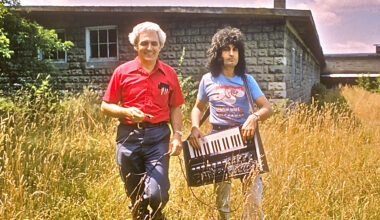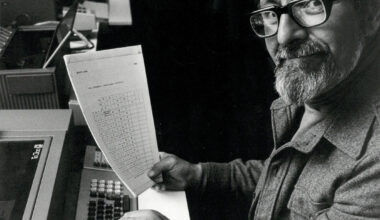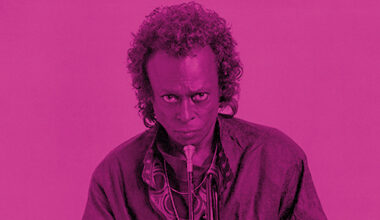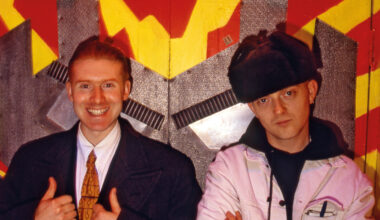The man behind The FLK’s sought-after 2011 ‘Chill Out’ homage, ‘We Know Where The Time Goes’, reveals all
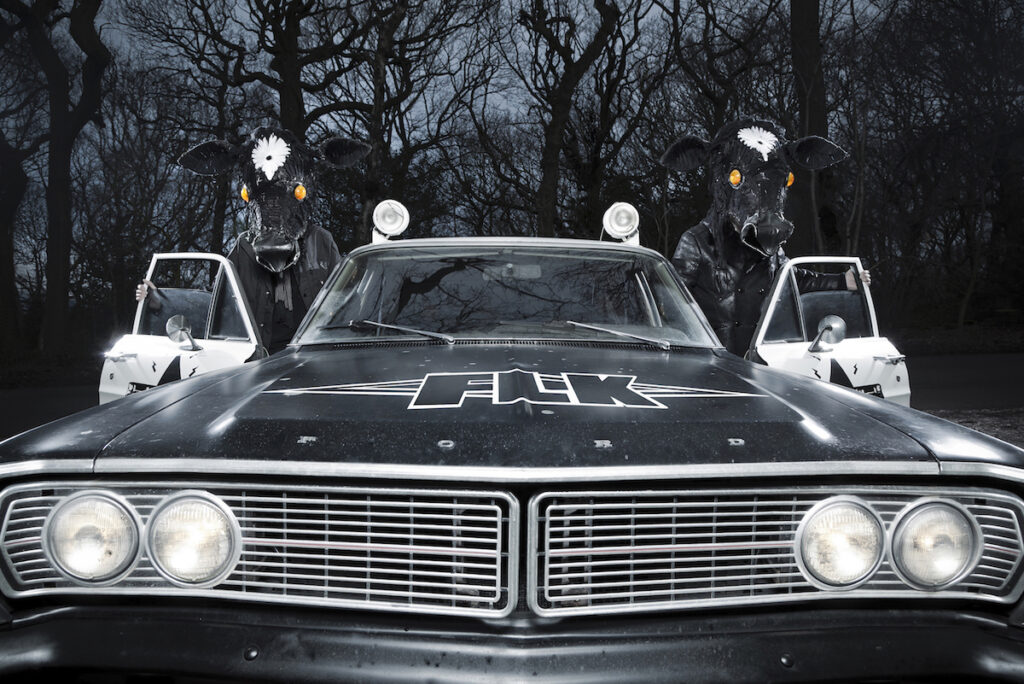
In May 2011, Rob da Bank tweeted to his followers, “Who do we think this is?” with a link to the account for The FLK. Clicking through brought you to a page with a logo that looked familiar to everybody who knew the sleeve of The KLF’s ‘The White Room’. Social media was suddenly alive with the notion that electronic music’s serial pranksters had made an unannounced, and typically unpredictable, comeback. Jimmy Cauty and Bill Drummond simply responded with silence.
Later that year, the mysterious FLK dropped ‘We Know Where The Time Goes’. Its sleeve bore echoes of The KLF’s 1990 album ‘Chill Out’, it had the same typeface and a pair of cows instead of sheep. Musically, ‘We Know Where The Time Goes’ also resembled ‘Chill Out’ – a single, seamless sonic road trip, but with samples of English folk songs in place of The KLF’s Americana. Exceptionally hard to find, the album was only available under the counter at select record shops. It was the very definition of obscurity. In other words, classic KLF.
Except that it wasn’t The KLF at all. ‘We Know Where The Time Goes’ was the creation of David Owen and Choque Hosein. The two were former members of Leeds indie group The Hollow Men, a band that had achieved a decade of modest, major label success before imploding in 1991. After The Hollow Men split, Hosein formed celebrated Mercury Prize nominees Black Star Liner and Owen focused on graphic design.
“I became really obsessed with folk music, and that’s how The FLK came about,” explains Owen on the origins of ‘We Know Where The Time Goes’. During that period of obsession, Owen and Hosein reconnected. “We bumped into one another and sorted out our differences over a drink. I told him about this idea for an album, which would be a journey through folk from the north of England to the south, and I kept saying that it would be like ‘Chill Out’.”
Hosein liked the sound of it, but they couldn’t find a way of getting started.
“Then one day, Choque said, ‘Why don’t we just record ‘Chill Out’ into Logic, mark off every single sample that they used and then start replacing them with our own?’. And that’s what we did. Eventually we got to a point where we’d obliterated ‘Chill Out’ completely.”
The album was named after the Sandy Denny-penned ‘Who Knows Where The Time Goes’, a fragment of which threads its melancholy way throughout the record. The samples were drawn from Owen’s deep immersion in folk music.
“I was definitely making a comment,” he says. “There’s a very big debate in traditional folk music about who owns the songs. Simon & Garfunkel had a massive worldwide hit with ‘Scarborough Fair’ and claimed all the money for it, but it’s a traditional song. They didn’t write it and they didn’t own it. By sampling a song like that for our album, I was saying that I’ve got every right.”
Elsewhere, the pair sampled from songs that simply meant something to them – Soft Cell’s ‘Memorabilia’, The Associates’ ‘Party Fears Two’, The Sisters Of Mercy’s ‘Driven Like The Snow’. Calling themselves The FLK – The Folk – was driven partly by reverence for The KLF, but it was also intended to protect their true identities, given the potential legal issues.
“We’d been massive KLF fans right from the very start,” says Owen. “I’d always liked the idea of sampling, and I had the same attitude as them towards copyright. We had no intention of clearing any of the samples.”
Once the album was finished, Owen found himself exchanging emails with Bill Drummond, who he’d shared a press officer with back in The Hollow Men days. Drummond was encouraging of their interpretation of ‘Chill Out’, however their distributor refused to support the release for fear of legal issues. Word of mouth ensured that the album reached an audience, albeit not necessarily the one Owen had wished for.
“The folk music world didn’t really get the FLK album,” says Owen with a disappointed sigh. “It seemed to be way over their heads. Some of the more alternative types did love it, but it was the traditional fans that I was aiming it at. Mind you, we also filmed ourselves burning 1,000 copies of Fairport Convention’s ‘Liege & Lief’ album, and that probably upset a lot of them!”
Silence – from Owen and Hosein and from Cauty and Drummond – continued to fuel speculation about who was behind this curious record. And the FLK played up to it.
“We never denied that we were The KLF, but we also didn’t admit it. Jimmy and Bill never said a word, they never made any comment about it. We just kept going, and people had to make up their own minds.”
Keep going they did. Their 2013 single ‘The Folk Law’, saw them using an identical 1968 Ford Galaxie police car to one that Jimmy Cauty had owned, and the duo released a second album ‘Mummers’, in 2015, which featured the pair in cow masks on the sleeve.
Its title nodded toward the fabled Mu Mu Land that The KLF had eulogised, but it was in fact another delve into English folk tradition. Specifically, the mumming play, where the actors would don masks to disguise their identity.
“When The KLF made their comeback a couple of years ago, that was the point at which we thought The FLK had run its course,” says Owen. “I have to remind myself that none of this was planned, though. I just wanted to make this album, sample these samples, make this folk documentary soundscape thing, but it just evolved.
“We could have used a different name, we needn’t have copied ‘Chill Out’, but maybe it wouldn’t have had the same impact. ‘We Know Where The Time Goes’ just went off in its own fantastic direction, and Choque and I were happy to go with it.”
